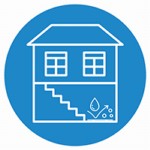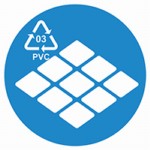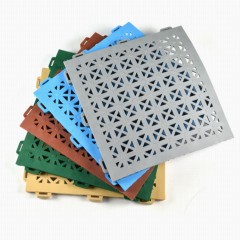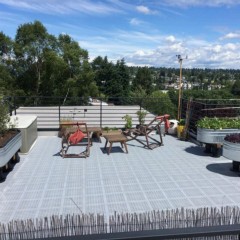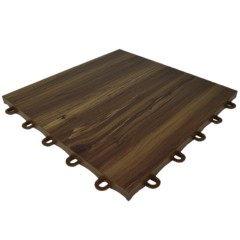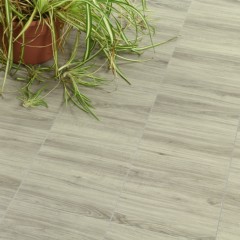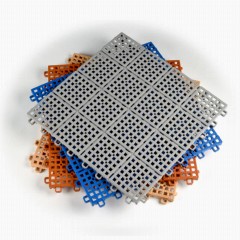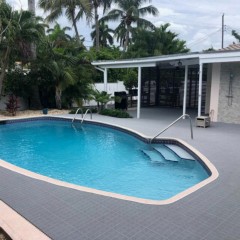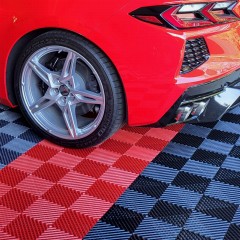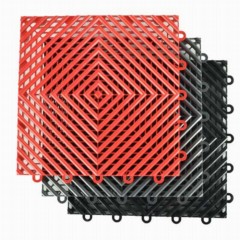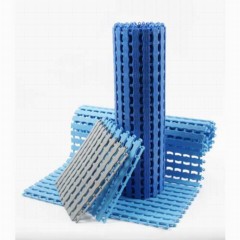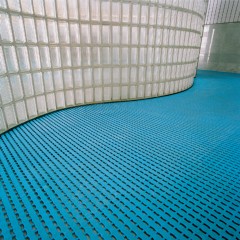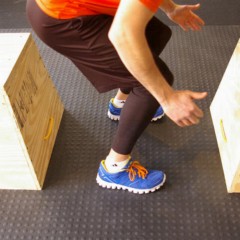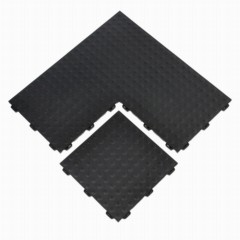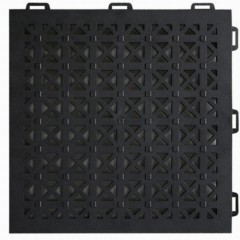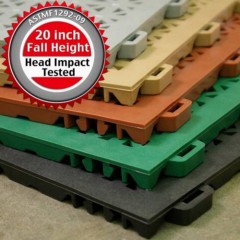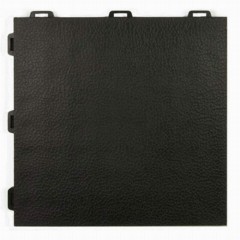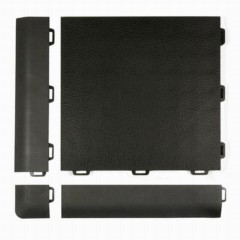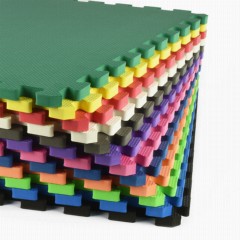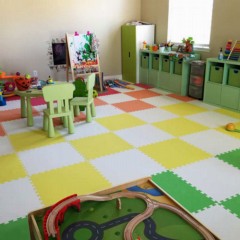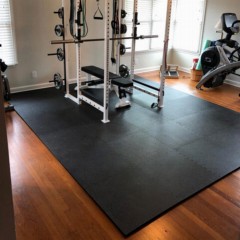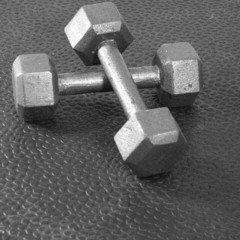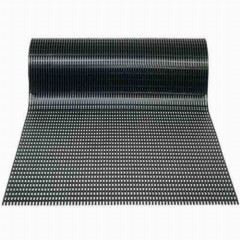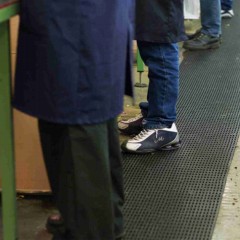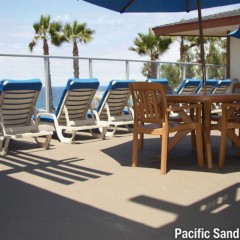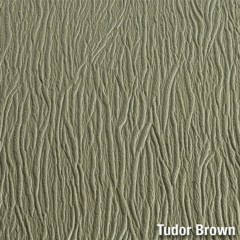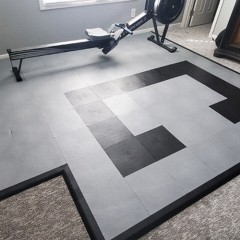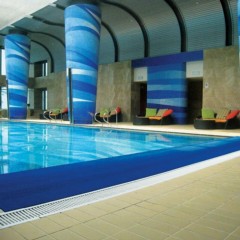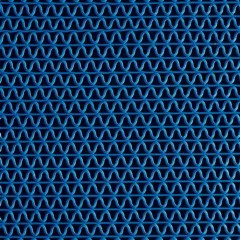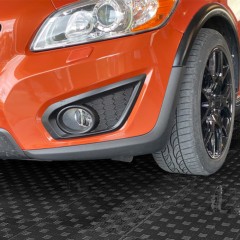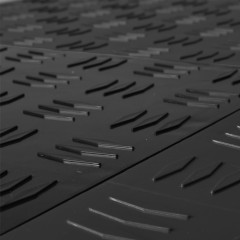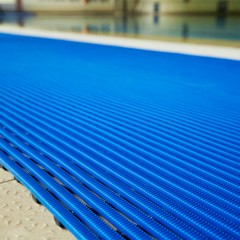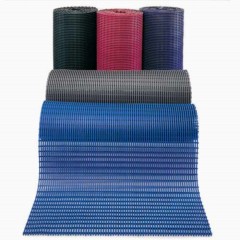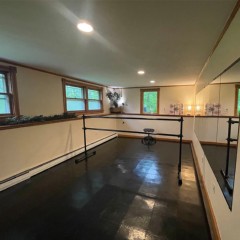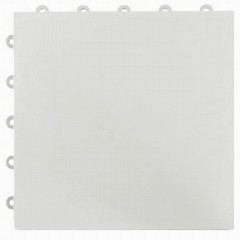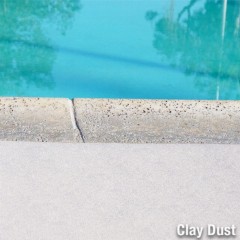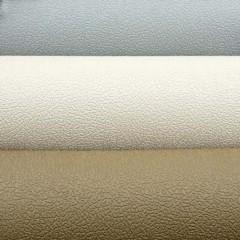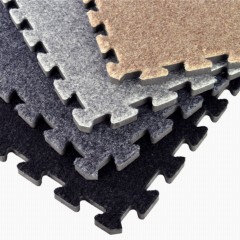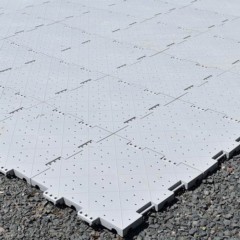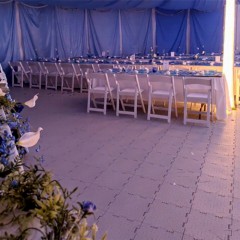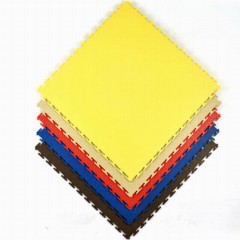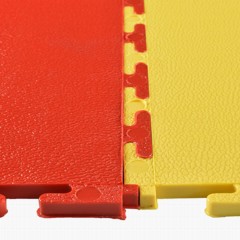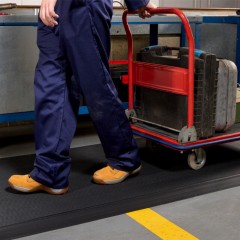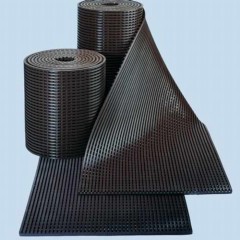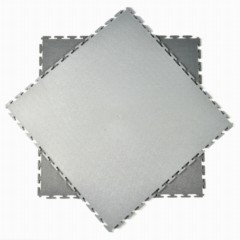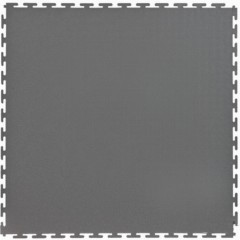Options for Waterproof Flooring
Our waterproof flooring products deliver materials that can stand up to constant moisture without breaking down. Whether used in an outdoor or indoor setting, these mats and tiles keep people safe with anti-slip textures.
These are different from water-resistant floors, which may absorb some moisture. Our waterproof floor materials repel moisture.
Types of Waterproof Flooring
At Greatmats, we offer three primary types of formats for our waterproof flooring.
- Tiles: Waterproof tiles are easy to move around because of a small size, but you can snap together multiple tiles for a larger coverage space.
- Mats: Waterproof mats are cut to a predetermined size, making them work well for a single person to stand on and use.
- Rolls: Waterproof rolls fit along a walkway near a pool or an assembly line, providing a safe anti-slip surface along a long, narrow space.
Styles of Waterproof Flooring
We have a few different styles of waterproof floors, helping you find the ideal design for your needs.
- Perforated: Use PVC plastic or rubber mats with holes that allow liquid to drain through to the subfloor, keeping the top surface free of slippery moisture.
- Floating: A floating waterproof tile has tiny pegs underneath that lift the base of the tile away from the subfloor, allowing water to flow underneath toward a floor drain and air to flow underneath for evaporation.
- Flat: We offer PVC, and vinyl tiles with flat surfaces that can stand up to significant moisture, such as in a basement or a laundry room that sometimes have flooding.
Features and Benefits of Waterproof Floor Mats
You receive several benefits when you select waterproof flooring from Greatmats. Many of our products include the following.
- Versatile use case options
- Safety by preventing standing water
- Improved traction
- Perfect for DIY installations
- Glue-free installation for easy disassembly
- Multiple designs and colors
- Raised base for airflow underneath
- Outdoor or indoor usage
- Limited need for maintenance
- More comfortable than concrete or similar subfloors
Where to Use Waterproof Flooring
Deploy our waterproof floor mats for home or commercial locations in many different places.
- Basements
- Home gyms
- Laundry rooms
- Kitchens
- Bathrooms
- Decks
- Balconies
- Rooftops
- Patios
- Garages
- Pools
- Locker rooms
- Saunas
- Spas
- Food prep stations
- Open-air storage locations
- Warehouses with some weather exposure
- Daycare for pets
- Dog training and obedience classes
Waterproof Flooring Q&A
What are the best waterproof flooring options for wet basements?
The
top options for wet basement flooring often have a raised base, which allows air to flow underneath, helping to dry the space after a flood or seepage through the foundation. With the airflow, there’s no need to remove the floor to encourage evaporation. Consider perforated interlocking floor mats with waterproof materials over an area with a floor drain.
Are foam mats waterproof?
A waterproof foam mat is a great selection when you need comfort in an area that has quite a bit of moisture.
Waterproof foam floor tiles need to be closed cell foam, rather than open cell foam, to maintain the ability to avoid absorbing water.
Is rubber flooring waterproof?
Determining
whether rubber floors are waterproof depends on the design of the waterproof rubber floor tiles. Vulcanized waterproof rubber flooring will not absorb any moisture, while unvulcanized rubber floors may absorb some water during long-term moisture exposure, meaning they are water resistant.
What are the best waterproof outdoor mats?
The
best waterproof outdoor mats need durable materials that can stand up to weather and UV rays. They also should have perforations that allow water to drain through to the subfloor, preventing standing water from appearing after a rainstorm. Having a non-slip material and texture is helpful as well for floors that will have regular moisture exposure.
Is there interlocking waterproof flooring?
Waterproof interlocking tiles are a popular choice among our Greatmats customers. We have dozens of options that allow you to create the precise coverage area required. Such tiles are easy to install, too. They may consist of foam, vinyl over a plastic base, PVC plastic, rubber, polypropylene plastic, carpet, and more.
 $649 /Tile You Save 41%$1.67/sqftShips Out in 1-3 Working Days Free ShippingShop$785 /Tile You Save 40%$2.02/sqftShips Out in 1-3 Working DaysShop$53714 /Roll You Save 19%$8.14/sqftShop
$649 /Tile You Save 41%$1.67/sqftShips Out in 1-3 Working Days Free ShippingShop$785 /Tile You Save 40%$2.02/sqftShips Out in 1-3 Working DaysShop$53714 /Roll You Save 19%$8.14/sqftShop